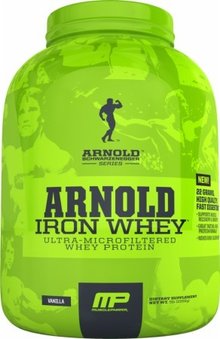
This product has been implicated in quite a bit of scandal. What would Arnold do?
This week, MusclePharm released a lab analysis of their Arnold Schwarzenegger Series Iron Whey protein powder, in response to consumers who were concerned about potential amino acid spiking[1] and allegations from at least one law firm.[2]
The results can be found here.[3]
First, we would like to sincerely thank MusclePharm for stepping up and providing this data to the world. Although their methodology was not what we'd consider perfect execution, it's a step in the right direction.
TL;DR
This is a long article, so here are the bullet points and important links:
-
This was not a true third-party test that satisfies our standards, and does not qualify to be "100% spike free" to us. (link to section)
-
In the powder tested, there seems to be very little amino acid spiking. (link to section)
-
The lab fails to test for taurine, one of the primary amino acids implicated in this ordeal. (link to section)
-
Due to the low leucine content, the powder tested is still not a great one. Not bad, but not great like Arnold's name deserves. (link to section)
-
A message to Arnold (link)
Because of the above points, we don't feel that this product is worth purchasing unless the price is under $40 / 5lbs.
Thankfully, PricePlow found some specials that are extremely close to that mark for those who aren't picky:
Why are we here?
If you're not already familiar with the situation, we urge you to read our article about amino acid spiking.[1]
Definition: In short, amino acid spiking is when a protein manufacturer adds low-cost free form amino acids (typically taurine, glycine, and/or creatine) to their protein powder in order to boost the amount of protein listed on the nutrition label.
Even though these aminos aren't real dietary protein, it's technically legal because of lax FDA guidelines. It is also extremely shrewd of the manufacturers to do so.
MusclePharm received much scrutiny over their Arnold Schwarzenegger Series Iron Whey powder because they list free form amino acids on the label in the Other Ingredients section after the main Protein Matrix:
Protein Matrix (Whey Protein Concentrate, Whey Protein Isolate, Whey Protein Hydrolysate), Amino Matrix [L-Glycine, L-Taurine, BCAAs (Leucine, Isoleucine, Valine) (3:1:2 Patent Pending Ratio), L-Glutamine], ...
At this point, consumers in the know were left to wonder, "Is that Amino Matrix calculated in the 22g of protein? If so, how much is in there?"
After enough questions were asked due to the product's popularity, MusclePharm answered the call by releasing a test through ChromaDex, a trusted lab in Irvine, CA.[4]
However, they may have answered the call too hastily and without thinking everything through, as we'll see below:
What are the results?
The results yield a mixed bag (mostly positive), but they may all be for naught since proper procedures were not followed:
-
This was not a true third-party test
As much as we appreciate MusclePharm taking this next step in the evolution of protein testing, we cannot stand behind this data because it did not follow a fair, open, and properly randomized process.
In the future, we'd like to see a third party participate more heavily. We would need the following:
-
A randomly blind purchase from a third party - not one provided by the manufacturer
-
A certified chain of custody, or at least an improved chain of custody from a production run
-
A full spectrum test of all amino acids in question
-
Bonus: GMP production logs from the manufacturer
Keep the above notes in mind when we analyze the [reasonably good] numbers below: We currently have no way of connecting the data provided here to a tub that you might purchase from your favorite retailer.
In a section lower down, we discuss a better process, but the bullets above are the basic gist of what we need to see in order to clear a product.
-
-
In the Iron Whey powder tested, there is indeed ~21.4g of real protein
The good news is that the powder tested in the provided lab report performed decently well.
After all is said and done, the tests show that Iron Whey mostly delivers where it counts: nearly 22g of protein is in here, just as the label states.
It's 21.4g to be exact -- close enough, and not "so spiked" that it is a major cause for concern.
This can be calculated on the last page, which shows a 32.4g scoop offering various milligram per gram ratios of several amino acids:
Analyte Units Spec. Result Aspartic Acid mg/g 66.9 Threonine mg/g 40.3 Serine mg/g 30.4 Glutamic Acid mg/g 109 Proline mg/g 45.5 Glycine mg/g 43.5 Alanine mg/g 37.2 Valine mg/g 33.6 Isoleucine mg/g 36.4 Leucine % 10-12 6.37%* Tyrosine mg/g 18.8 Phenylalanine mg/g 20.4 Lysine mg/g 54.6 Histidine mg/g 10.7 Arginine mg/g 22.8 Cystine mg/g 13.6 Methionine mg/g 13.3 SUM 660.7* *Note: Leucine is shown as a percentage (6.37%), not mg/g. Converting it to mg/g yields:
Amount of leucine per gram: 6.37% of 1000mg = 0.0637 * 1000 = 63.7mgSo 63.7mg of every gram of the product tested is leucine.
Adding all of these bound amino acids, you get 660.7mg of protein-based amino acids out of 1g of product.
This means that 66.07% of each scoop is dietary protein. At 32.4 total grams of powder in each scoop, we now know that we have
Amount of real protein per scoop: 32.4 * .6607 = 21.4gSo we now have 21.4g of peptide-bonded protein per scoop. Very close to the 22g.
The “spike”
MusclePharm admittedly gets .391g from glycine, which is explained on their introductory page and on PDF page 6 (shown as "Page 2 of 9" in the top-right of the ChromaDex report). That leaves roughly less than .3g for the taurine and BCAAs.
This is so little that it's not really even spiking.
At this point, we're forced to question the motives behind it, and actually wish it was more spiked in terms of the BCAAs. Allow us to explain:
-
But the protein isn’t the highest quality
It's interesting that this test specifically calls to attention one shortcoming of the product: Iron Whey sorely misses the mark on its leucine levels.
The lab tests show a spec of 10-12%, yet it comes in short at 6.37%. Interestingly, this is the only amino acid that has a specification attached to it.
As mentioned in the chart above above, 6.37% of leucine means that in every gram of product, you're getting 63.7mg of leucine in every gram of powder. Do some math:
Amount of peptide-bonded leucine per scoop: 63.7mg / g * 32.4g = 2063.8mg = 2.06gAnd now we know that in every scoop, you're getting 2.06g leucine from whey.
Not bad... but not incredible. Save that leucine number for later.
Why do we care so much about leucine?
What you're basically witnessing is a marketing strategy that backfired.
Leucine is the single most important amino acid for an athlete, as it's most heavily linked to muscle protein synthesis and anabolism, primarily through the mTOR pathway.[5,6]
Few will debate the importance of leucine in terms of our collective athletic goals.
In a perfect world full of 100% open data, we'd nearly always choose the product that contained the most leucine, when reasonably affordable. It's the key amino.
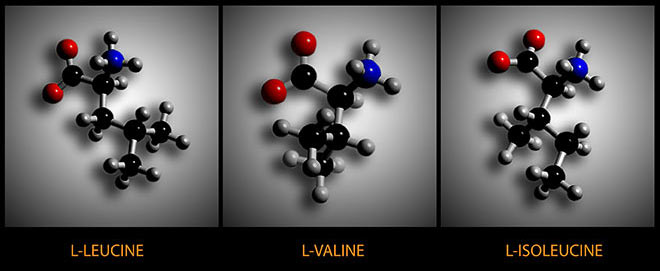
Leucine, Valine, and Isoleucine are the three BCAAs, and they're an extremely important part of your diet (and protein powder) -- especially leucine.
A solvable problem: Add more leucine
An acceptable solution is to add some free form leucine. This is the kind of "amino acid spiking" that we fully endorse, since we love BCAAs. And it's actually what MusclePharm did, except their execution missed the mark.
As we will see, the Amino Matrix has simply been spread too thin across too many amino acids, effectively making each one "pixie dusted".
With .391g of glycine, of which it is the first on the Amino Matrix list, then there must then be less than or equal to that amount of taurine and BCAA in there as well.
That gives us a .391g theoretical max of BCAA, and the BCAA is in a 3:1:2 Leucine:Isoleucine:Valine ratio. This means that half of your .391g BCAA is leucine, thus giving you a theoretical max of .195g added leucine.
Adding .195g to the 2.06g leucine per scoop (calculated in the section above), and we now have ~2.255g final leucine per scoop (theoretical max).
Final leucine calculation: .391g * 3/6 = .196g free form added (theoretical max) .195g + 2.06g = 2.26g total leucine content per scoopFinally, to compare against the leucine specification provided, we calculating this new in terms of percentage:
New leucine total against specification: 2.26g / 32.4g = 0.0698 = ~6.98% leucine (theoretical max)Better, but still far under 10-12% spec.
When marketing backfires..
So why even add the free form amino acids?
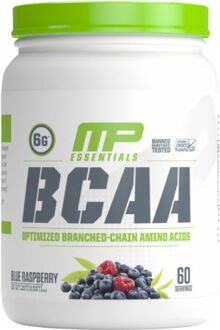
Is it possible MusclePharm included the BCAAs on the label just so that they could get a small advertisement in for this product?
This is pure optimistic conjecture on our behalf: BCAAs are popular and MusclePharm likely did this for marketing and label recognition. The product was designed before the amino acid spiking outcry hit the airwaves.
Perhaps they weren't doing it to pad the stats like other companies -- they were likely doing it to look cool, add some "mouthfeel" from the glycine, and to promote their patent-pending 3:1:2 BCAA ratio, which cross-markets their other products.
Then the outcry came, and they were stuck with pixie-dusted free form aminos on the label. Hundreds of fans then questioned the product, hence prompting this analysis to be released.
If that's the case, then what you're basically witnessing is a marketing strategy that backfired.
It could be worse. But it could be better.
Anyway, assuming that this batch tested is the same as those out there on the shelves, then you shouldn't feel short changed here (unless you paid incredible amounts of money for it). Again, it's not that bad. It's just not that great.
In all honesty, the person who should feel short-changed is Arnold himself. In our opinion, the "Arnold Schwarzenegger of whey proteins" should be loaded with high quality protein -- even if it's more expensive -- and leucine should be above spec, not below it. More on this later.
-
Why wasn’t taurine or creatine tested?
The numbers all add up properly, and it's likely that there are extremely low levels of taurine in this batch - a good thing in this specific situation.
But since taurine is on the label, and taurine has been implicated in so many of these spiked protein powders, we have to ask,
Why wasn't taurine tested?Normally, this would raise a large amount of suspicion, but as noted, the bound protein numbers did add up to 21.4g here.
However, it still seems dodgy to avoid it, especially when you have law firms making more sensational claims about what's inside.[2]
In the future, this is a separate test worth paying for to reduce scrutiny. Same goes for creatine.
Note: ChromaDex refused to comment on this article without written consent from the customer.
That wraps up our analysis on the numbers that were given. Now let's move forward.
Warning: The following two sections are a matter of opinion, and are not based on any scientific fact.
Suggesting a better process
Once again, we thank MusclePharm for opening up the books and paying the bill here. It's the next step towards a more fair and open industry.
But it's not yet good enough. Here's what we want:
-
Random Purchase
Rather than the manufacturer provide a tub, we'd like to see a random purchase occur with no broken chain of custody.
For instance, one example is that we could file a PO through Europa (the largest and most trusted distributor in the industry), and have it drop-shipped from any one of their warehouses, with tracking, insurance, and delivery confirmation.
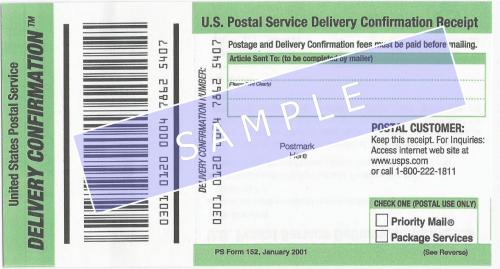
It's not a perfect system, but requiring delivery confirmation (with recipient signature) from retailer/distributor to the lab would ensure a slightly less broken chain of custody.
While this doesn't "prove" the chain of custody unless Europa was willing to get involved, it would be far more legitimate and akin to purchasing one in a store (which is where that tub would have ended up).
You can read more about Chain of Custody in the Office of Justice Programs, but the procedures are typically tied to criminal evidence, not supplement testing.[7]
We're also open to better suggestions in the comments for this one, since the process proposed here is far from perfect.
-
More thorough testing
Why wasn't taurine tested?
In addition, both taurine and creatine should also be accounted for in future tests (even if they're not on the label). Possibly even betaine if budget permits.
Note that the more tests you request, the more expensive they become, so someone has to pay for this.
This is why having the manufacturer pay for the test -- but the testers pay for the product -- seems like a fair and reasonable idea.
-
Manufacturers could provide their GMP tests
To ice the cake, manufacturers could provide their own tests on top of the third party tests.
If a company is GMP compliant, then they would already have authentication tests for every single batch of every single product that they ever produce.
Manufacturers are legally obligated to do so and compile a master manufacturing record (MMR).
But would that catch any spiking?
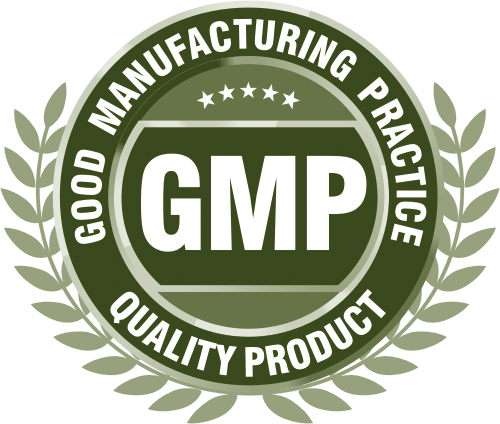
GMP stands for 'Good Manufacturing practice' and involves a massive amount of logs and tests on each product batch
According to the law, if free form amino acids are listed on the ingredient list, then they have to have records in their MMR that those are actually present, to the spec they manufactured for. See Section XIII Subpart I - Production and Process Control System: Requirements for a Batch Production Record.[8]
Of course, that'd require the manufacturer to actually meet requirements, which few actually do (we have to believe that MusclePharm does, since they were once NSF certified and are a publicly traded corporation).
Taking it further, it'd be incredible to see that data from multiple production runs as well.
However, those tests would not show when free form aminos were added to a product but not listed on the label. So that is why it's icing on the cake, but not the cake itself.
All in all, we're not questioning this specific test, and we appreciate what MusclePharm did.
We just think there's a better, more open process to utilize in the future, and there's more data that can be provided as an act of good faith.
Is this the “Arnold of whey proteins”?
Reminder: This section is our opinion, and is not based on any fact.
Muscle Pharm dragged Arnold's name through the dirt with this -- Fan on Facebook
Let's be clear with something. Arnold Schwarzenegger is the greatest bodybuilder to have ever lived. As an athlete, movie star, politician, and a philanthropist, he is a true renaissance man of our times.
Although I'm not a bodybuilder, I look up to Arnold in more ways than one. To do one half of one percent of what he has accomplished would be considered a successful life.
So you can imagine the excitement when we learned that he was launching a supplement line, 43 years after winning his first Olympia.
That's a lot of time to perfect your message, your brand, and find a suitable partner.
And while these supplements aren't bad, they're just not what I consider "Arnold good". They're not best in class -- very much unlike the man himself.
So I'll say what everyone else has been wanting to say:
I'm not alone in thinking this. One commenter on Facebook stated,"Muscle Pharm dragged Arnold's name through the dirt with this".
Regardless of where this saga ends up, this product line is ultimately causing unnecessary drama that Arnold just didn't need. He was a Republican Governor in California for 6 years - the man's had more than enough drama!
Honestly, we were hoping for "the Arnold of protein", and instead we got the Rob Schneider. Not horrible... just a bit annoying on the outside, lacking on the inside, yet still pulls out an occasional hit despite being overpaid. (The occasional hit would be the Iron Mass product. We love its ingredient profile.)
What is our net change here?
This site has so many brands and product lines, I can't keep track of them all. So when a new one comes out, I have to ask:
- Is this really anything new?
- Who is the real demographic here, and how is this affecting them (and possibly their families)?
- Is the industry a better place with it?
- Is the world a better place with it?
Realize, PricePlow is not a retailer. We don't need to beg for quantity discounts from every brand, meaning we do not have to shill for anyone.
I get to worry about the confused 16 year old kid who wants to start on the defensive line and walks into the store and asks for some protein. How does this work out for him?
There are only so many brands we can promote, and that's fine, because there's only so many brands worth promoting. So very few companies are actually doing something different, new, unique, or positive.
Our non-biased frame allows us to ask the above questions.
And ultimately, while I think MusclePharm has been net positive for the industry, the Arnold Series has not.
It didn’t have to be this way
What's funny is that there is already a proven model out there for producing a "celebrity" supplement line. Look no further than JYM, which is the brainchild of Jim Stoppani.
JYM has proven that users are indeed willing to pay extra - and be happy with it long-term - if you give them a kick ass, open formula, and back it up with science. Give people transparency, truth, and the best damned product you can reasonably make without anybody going broke... and the public will happily pay more for it.
Further... JYM's customers keep coming back for more! Various JYM products have sold out more times than we can count, and his retention rate is through the roof.
But with the Arnold Series, several stores do charge a large markup for it, yet we aren't getting those same benefits of transparency and quality.
On one hand, we're happy that we find great clearance prices on Iron Whey -- it makes this whole situation feel a lot better. But we're also unhappy because Arnold's product here is just not as elite as the man himself. Arnold's fans are willing to pay more for the name, but they should expect more, too.
A message to Arnold
Arnold, if you're out there, I personally think you should find a way to get this product line improved before it is involved in any more shenanigans and accusations. Your name and your body of work is just so much better than this. Have your guys call me. I'd love to have a chat.



Comments and Discussion (Powered by the PricePlow Forum)